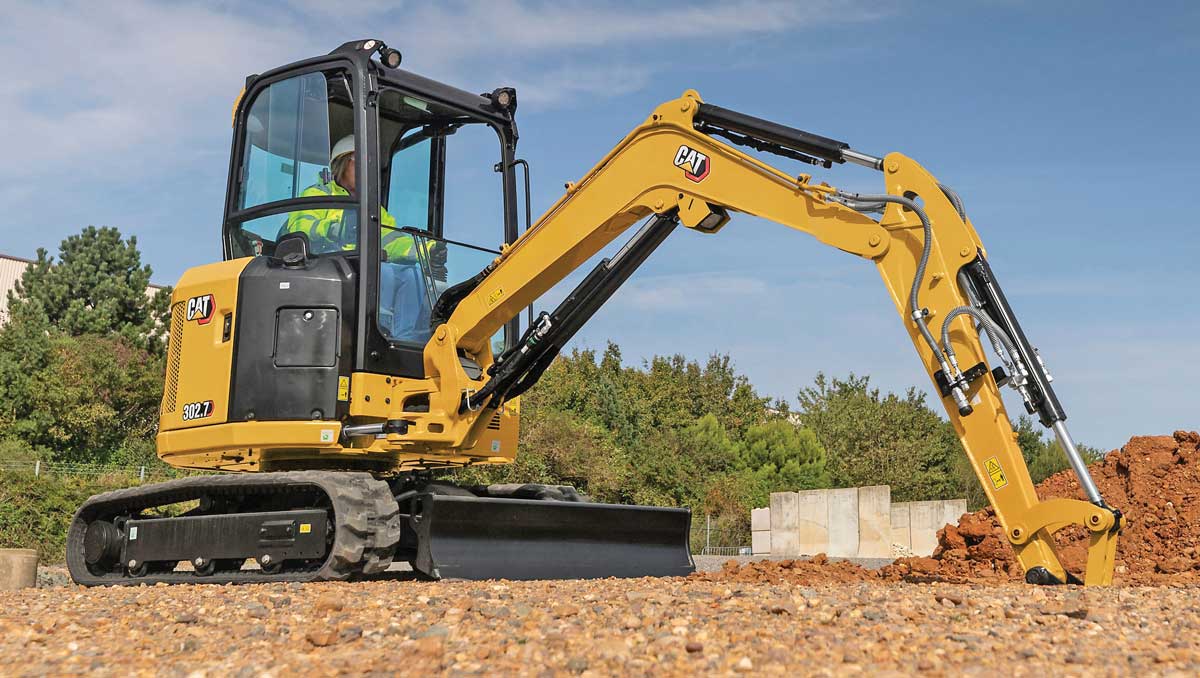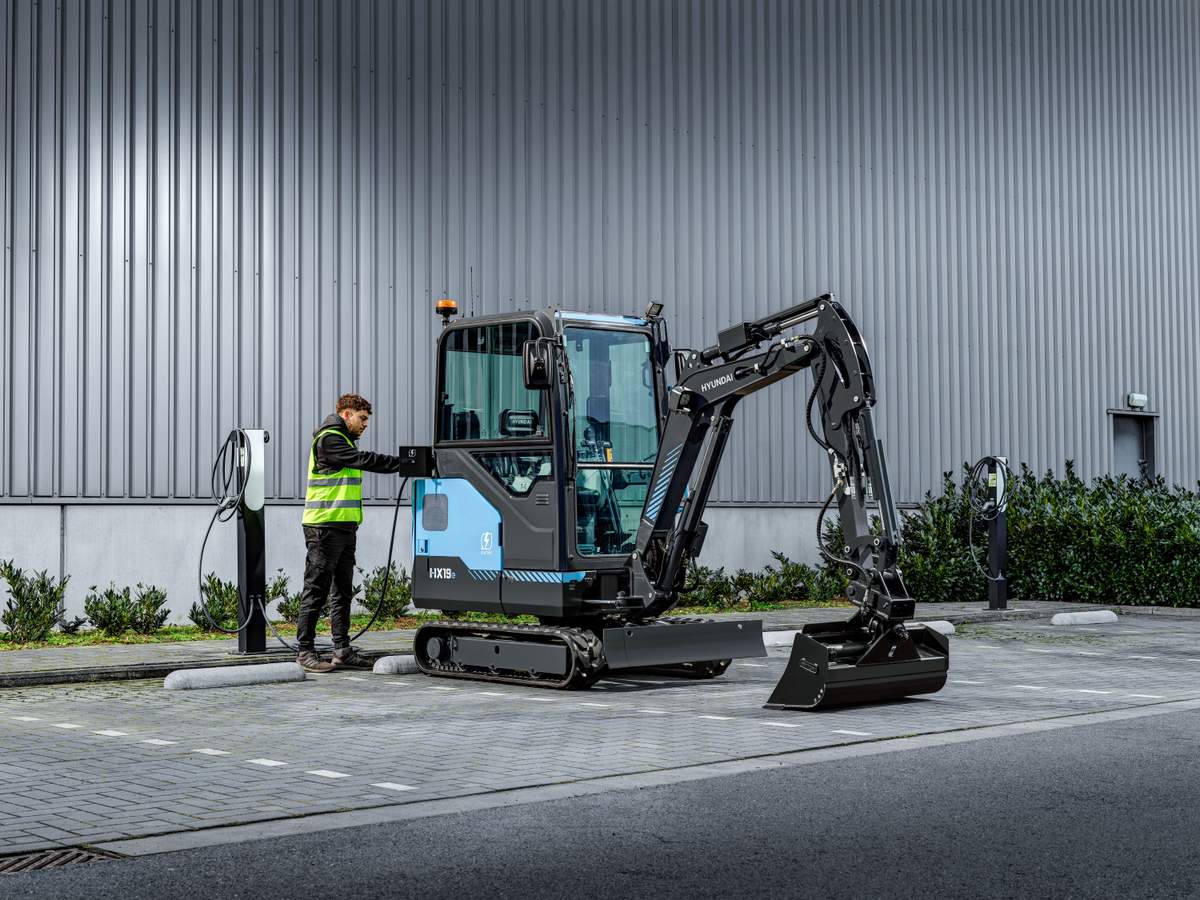The Next Generation Is Here
Just finding a bathroom in a Caterpillar facility can be a challenge. My advice: Don’t wait till you really have to go. At Cat’s Industrial Design Center in Mossville, Ill., around 2,000 people (scientists, engineers, technologists and experimental mechanics) work in seven buildings across 1.4 million sq ft on a campus that runs 24 hours a day, seven days a week, 365 days a year. Its great halls are as wide as streets, which maze through massive cubicle farms, conference rooms, research centers, food facilities and the occasional lavatory. Caterpillar is the biggest maker of earth moving equipment in the world, and you get a real feel for that getting lost in Mossville’s Industrial Design Center.
I also got a feeling for how large and innovative the design team was at an October international press event, where Caterpillar released everything from a hybrid excavator to its Tier 4 Final engine strategy (along with a newly opened museum to boot).
“Caterpillar spends $8 million a day on research and development,” explained Tana Utley, chief technology officer and vice president at Caterpillar Inc. “We have over 10,000 engineers and technologists all together. We do that in a very purposeful way — focused on two things. One is our journey to near zero emissions, which we are ready to declare victory on today, and the other is value for the customer. There’s going to be a little teaching today because this is the first time we’ve really unveiled our technology strategy to the press.”
What followed were two days of presentations, speeches, tours and operation time, all aimed at educating the trade press on Caterpillar’s design and technology philosophies and the company’s latest, greatest products. The most impressive introduction was the first model in Cat’s new line of hybrid excavators, the Cat 336E H, which uses a unique hydraulic hybrid technology. When most folks think hybrid, they think electricity, but there are many ways to store and reuse energy. Pressurized oil is a great way to capture kinetic energy for reuse, but it’s more difficult to handle than electricity because precision fluid mechanics is exceedingly harder to manipulate.
The 336E H is a model example of how hydraulic hybrids work. The unit has all of the same powerful advantages of the 336E excavator with the biggest difference between the two models being fuel efficiency. To achieve added fuel savings, the design of the 336E H uses three building block technologies and more than 300 patents, including: 1) reusing energy via the hydraulic hybrid swing system, which captures the excavator’s upper structure swing brake energy in accumulators, and then releases the energy during swing acceleration; 2) conserving fuel with engine power management via the Cat Electronic Standardized Programmable (ESP) pump, which smoothly transitions between the hydraulic hybrid power sources, engine and accumulator; and 3) optimizing performance using restriction management via the patented Cat Adaptive Control System (ACS) valve, which intelligently manages restrictions and flows to seamlessly control machine motion with no loss of power.
“We have a hundred instrument tests that validate the numbers today, and we’re seeing efficiency improvements [that’s material moved per unit of fuel] in this machine that are as much as 50 percent,” said Ken Gray, global product manager for large hydraulic excavators at Cat. “And I expect this hybrid to routinely use 25 percent less fuel when doing the exact same work as the standard 336E does.”
That’s impressive, but the 336E H is not exactly compact, but Gray promised similar styled hybrids down the line, noting the 336E H would be released in North America in April 2013. The 336E H will meet Tier 4 Interim emissions standards, but Caterpillar also unveiled is broader plan for Tier 4 Final emissions technologies. Like most manufacturers, Caterpillar has selected the technology combination of EGR (exhaust gas recirculation), SCR (select catalytic reduction) and a DPF (diesel particulate filter) to meet Tier 4 Final (the last EPA emissions standard for off-highway diesel engines). That’s Cat’s plan for most of its diesel engines in the 130- to 560-kW bandwidth (170 to 750 hp).
SCR requires an additional new fluid called DEF (diesel exhaust fluid or “urea”), which must be filled up almost every time you refuel your machines. To reduce the higher levels of NOx, DEF is injected into the exhaust stream downstream of the engine in what’s called a diesel oxidation catalyst (DOC). When the exhaust gases combine with the DEF in the DOC, NOx is broken down into nitrogen gas and water vapor and expelled through the exhaust pipe.
Luckily, most diesel engines below 170 hp (a good portion of Cat’s compact equipment lines) will not need an SCR system or require DEF. Of course these technologies were not the end game. To discuss the future, Cat called Lou Balmer-Millar to the stage, director of research and advanced engineering.
“We see readily available renewable fuels as well as abundant and inexpensive natural gas,” said Balmer-Millar. “We know that our engines and machines need to operate on a variety of fuels. We’re looking at renewable drop-in diesel fuel — these are renewables that have compositions that are very similar to diesel fuels. We’re looking at a fuel from waste. We’re looking at gas to liquids — a whole suite of fuels … And you can’t go a day without hearing about the abundant and inexpensive natural gas made available through fracking technology. This low price gas is going to drive investment and development. Our rail, mining and electric power customers are looking to us to provide natural gas solutions well into the future. First, we’ll be developing a comprehensive lineup of natural gas burning engines.”
There was so much released and discussed, it’s impossible to discuss it all in 1,200 words, but the most culturally fascinating introduction was definitely the Caterpillar Visitors Center, which sits stately on the Illinois Riverfront. The Visitors Center is nearly 50,000 sq ft and home to a number of excellent exhibits, including a 62-seat theater inside a life size Cat 797 mining truck (a 24-ft tall, 400-ton heavy hauler). The Visitors Center spotlights Caterpillar’s long heritage, its products and services and the Cat people who work every day all over the world. Open to the public Monday through Saturday, the Visitors Center is a fascinating and beautifully built facility. It’s also an important public reflection of Caterpillar’s rich history and its expansive future, both of which are fueled by innovative design and technology teams.
Keith Gribbins is managing editor of Compact Equipment, based in Brecksville, Ohio.




